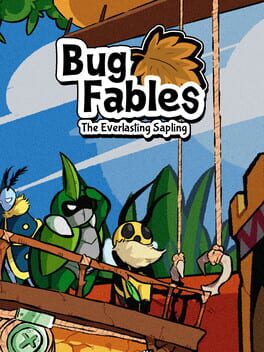The biggest pitfall of the spiritual successor, in my opinion, has always been the fear of upsetting a fanbase that it has no actual allegiance to. While indie games have the potential to be experimental, pioneering, boundary-pushing, spiritual successors are often derivative, inoffensive, fine but forgettable. The big irony here is that the OG Paper Mario can be looked at as the greatest spiritual successor of all time. While it's not technically a sequel to Super Mario RPG, it uses the concepts established in it as a springboard towards a totally unique identity. The half-baked action commands became the basis for one of my favorite turn-based combat systems ever, a strategic game of simple arithmetic and 1s and 2s instead of obtuse number crunching. The idea of an explorable Mushroom Kingdom was adapted into a cozy, easy to look at world where even the most basic of Mario enemies are given carefully considered characterization. It's a great game because it took lessons away from what came before it, not because it was trying to make Super Mario RPG, again.
Now: Bug Fables. What makes up its identity besides just being a spiritual successor to Paper Mario? The most obvious answer here is that it's party based. This doesn't separate its combat all that much from its spiritual predecessor, as the battles play out in similar fashion, but it's part of a larger effort to "RPG-ify" Paper Mario. Along with the party, the story's played more straight than goofy for example, and there's also a ton of sidequests. Most of these elements aren't very successful: the three main characters are poor even before their clumsy attempts at arcs, the sequence of events is dull, the setting isn't all that imaginative, as you've probably seen it done half a dozen times in various PG-rated films. But, there's one thing here that actually resonated with me, and, ironically, it's one of the only major parts of Super Mario RPG that Paper Mario didn't really attempt to adapt in any form: optional content. There's a surprising amount of secret locations, bosses, and abilities to find in Bug Fables, and a lot of them are accessed through sidequests that don't seem all that special at first glance. This really adds to the world in a way that's perpendicular to how Paper Mario does it, but there's also a problem with it. You need to get through 2 or 3 chapters of fighting recolored Goombas and Koopas to actually get to the good stuff, which is pretty representative of the game as a whole. It's much more interested in showing off what makes it like Paper Mario than what makes it unlike Paper Mario, which doesn't sit right. The original Paper Mario wasn't satisfied in just being an acceptable sequel to its spiritual predecessor, so why should this game be?
Now: Bug Fables. What makes up its identity besides just being a spiritual successor to Paper Mario? The most obvious answer here is that it's party based. This doesn't separate its combat all that much from its spiritual predecessor, as the battles play out in similar fashion, but it's part of a larger effort to "RPG-ify" Paper Mario. Along with the party, the story's played more straight than goofy for example, and there's also a ton of sidequests. Most of these elements aren't very successful: the three main characters are poor even before their clumsy attempts at arcs, the sequence of events is dull, the setting isn't all that imaginative, as you've probably seen it done half a dozen times in various PG-rated films. But, there's one thing here that actually resonated with me, and, ironically, it's one of the only major parts of Super Mario RPG that Paper Mario didn't really attempt to adapt in any form: optional content. There's a surprising amount of secret locations, bosses, and abilities to find in Bug Fables, and a lot of them are accessed through sidequests that don't seem all that special at first glance. This really adds to the world in a way that's perpendicular to how Paper Mario does it, but there's also a problem with it. You need to get through 2 or 3 chapters of fighting recolored Goombas and Koopas to actually get to the good stuff, which is pretty representative of the game as a whole. It's much more interested in showing off what makes it like Paper Mario than what makes it unlike Paper Mario, which doesn't sit right. The original Paper Mario wasn't satisfied in just being an acceptable sequel to its spiritual predecessor, so why should this game be?
